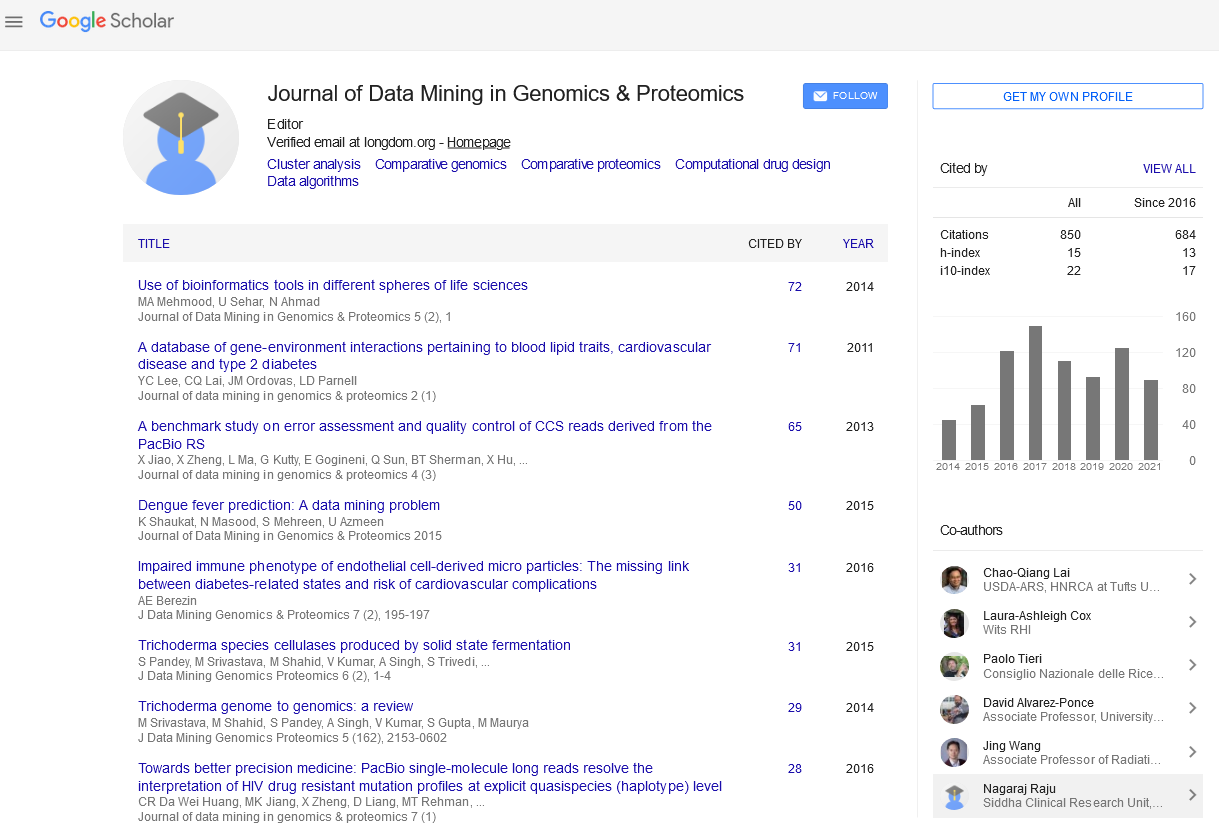PMC/PubMed Indexed Articles
Indexed In
- Academic Journals Database
- Open J Gate
- Genamics JournalSeek
- JournalTOCs
- ResearchBible
- Ulrich's Periodicals Directory
- Electronic Journals Library
- RefSeek
- Hamdard University
- EBSCO A-Z
- OCLC- WorldCat
- Scholarsteer
- SWB online catalog
- Virtual Library of Biology (vifabio)
- Publons
- MIAR
- Geneva Foundation for Medical Education and Research
- Euro Pub
- Google Scholar
Useful Links
Share This Page
Journal Flyer

Open Access Journals
- Agri and Aquaculture
- Biochemistry
- Bioinformatics & Systems Biology
- Business & Management
- Chemistry
- Clinical Sciences
- Engineering
- Food & Nutrition
- General Science
- Genetics & Molecular Biology
- Immunology & Microbiology
- Medical Sciences
- Neuroscience & Psychology
- Nursing & Health Care
- Pharmaceutical Sciences
Understanding circadian transcriptional rhythms using next-generation sequencing
2nd International Conference on Big Data Analysis and Data Mining
November 30-December 01, 2015 San Antonio, USA
Michael E. Hughes
University of Missouri, USA
Posters-Accepted Abstracts: J Data Mining Genomics Proteomics
Abstract:
Eukaryotic circadian clocks include transcriptional/translational feedback loops that drive 24-hour rhythms of transcription. These transcriptional rhythms underlie oscillations of protein abundance, thereby mediating circadian rhythms of behavior, physiology, and metabolism. Numerous studies over the last decade have employed microarrays to profile circadian transcriptional rhythms in various organisms and tissues. Here we use RNA sequencing (RNA-seq) to profile the circadian transcriptome of Drosophila melanogaster brain from wild-type and period-null clock-defective animals. We identify several hundred transcripts whose abundance oscillates with 24-hour periods in either constant darkness or 12 hour light / dark diurnal cycles, including a number of non-coding RNAs (ncRNAs) that were not identified in previous microarray studies. Transcriptional profiling at the level of individual exons reveals alternative splice isoforms for many genes whose relative abundances are regulated by either period or circadian time, although the effect of circadian time is muted in comparison to that of period. Interestingly, period lossof- function significantly alters the frequency of RNA editing at a number of editing sites, suggesting an unexpected link between a key circadian gene and RNA editing. We also identify tens of thousands of novel splicing events beyond those previously annotated by the modENCODE consortium, including several that affect key circadian genes. These studies demonstrate extensive circadian control of ncRNA expression, reveal the extent of clock control of alternative splicing and RNA editing, and provide a novel, genome-wide map of splicing in Drosophila brain.
Biography :
Michael E. Hughes began his academic career at Stanford University, receiving co-terminal BS/MS degrees in Biology in 2002. From there, he began his doctoral studies at Harvard Medical School in the Division of Medical Sciences investigating how alternative splicing regulates dendrite morphogenesis. After receiving his Ph.D. in 2007, he worked on circadian transcriptional rhythms as a postdoctoral fellow with Professor John Hogenesch at the University of Pennsylvania School of Medicine and Professor Michael Nitabach at Yale Medical School. He is currently an Assistant Professor of Biology at the University of Missouri-St. Louis.


